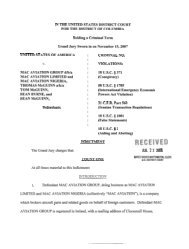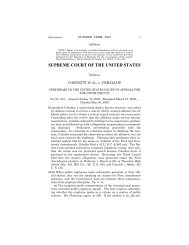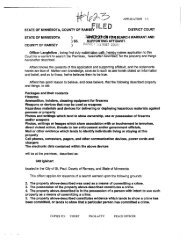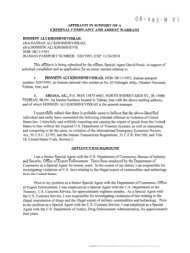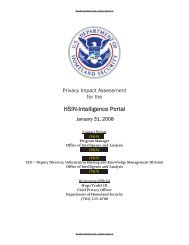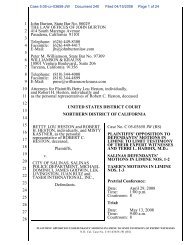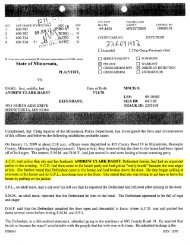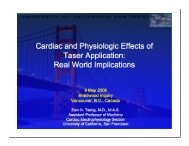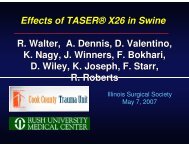TASER Electronic Control Devices Review Of Safety Literature
TASER Electronic Control Devices Review Of Safety Literature
TASER Electronic Control Devices Review Of Safety Literature
Create successful ePaper yourself
Turn your PDF publications into a flip-book with our unique Google optimized e-Paper software.
Figure 2. Output waveform of <strong>TASER</strong> X26 ECD in tissue. The output circuit is designed to<br />
deliver a constant charge per pulse. Thus the output current is largely load independent.<br />
In comparison, an AED (automatic external defibrillator) delivers appropriately 40<br />
mC (millicoulombs) into the person at discharge. Thus, the AED delivers approximately<br />
400 times the charge of a <strong>TASER</strong> ECD.<br />
1.3. How Does the ECD Indirectly Capture Muscles<br />
The <strong>TASER</strong> ECD delivers a rapid series of very short duration (10-100 µs) electrical<br />
pulses. Each pulse has less peak current than a strong static electricity<br />
shock that one could get from a doorknob on a winter day. See Figure 3. Just as<br />
a strong static shock temporarily incapacitates someone, this series of 19 very<br />
short duration shocks per second delivered in probe-mode from the <strong>TASER</strong> X26<br />
will likely temporarily incapacitate a person.<br />
The ultra-short electrical pulses applied by <strong>TASER</strong> ECDs are intended to stimulate<br />
A-α motor neurons, which are the nerves that control skeletal muscle contraction,<br />
without stimulating cardiac muscle.<br />
14




